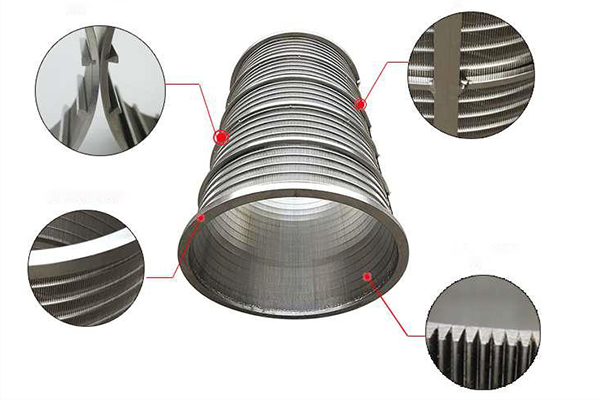A wastewater drum screen is crucial in wastewater treatment plants and industrial processes where liquid-solid separation is necessary. It plays an important role in removing debris and solid particles from wastewater before further treatment.
Wastewater drum screens are mechanical devices designed to intercept and remove large solids, debris, and suspended materials from wastewater. They are typically placed at the influent (inlet) of wastewater treatment processes to prevent damage to downstream equipment and ensure the efficient operation of treatment systems.
Our wastewater drum screen consists of v-shaped wedge wire profiles and support rods and it has anti-clogging and self-cleaning functions.
INQUIRY

Here are the work principles of the wastewater drum screen:
▪ Influent Flow:
Wastewater enters the drum screen from the influent channel. The influent flow is directed toward the drum, where the separation begins.
▪ Screening Mechanism:
As wastewater flows into the drum, the rotating mechanism (for rotary drum screens) or conveyor (for internally fed drum screens) lifts the solids and debris out of the water. The drum screen's design features perforations or mesh openings of a specific size, allowing water to pass through while capturing particles above a certain size.
▪ Size of Openings:
The size of the openings in the drum screen is crucial and is determined based on the desired level of filtration. Different drum screens may have varying opening sizes to capture different types and sizes of solids.
▪ Solids Removal:
The captured solids are lifted out of the water and transported to a discharge point. In rotary drum screens, the solids are often collected on the interior surface of the drum and are then lifted and discharged. Internally fed drum screens use a conveyor to move solids to a collection point.
▪ Continuous Operation:
Wastewater drum screens are designed for continuous operation. As the drum rotates or the conveyor moves, the screening process is ongoing, ensuring a consistent removal of solids from the wastewater flow.
▪ Effluent Discharge:
After passing through the drum screen, the treated wastewater, now free from larger solids, continues its journey through the treatment process. The captured solids are typically transported to a collection point for further processing or disposal.
In summary, a wastewater drum screen operates through a combination of influent flow, a rotating drum or conveyor mechanism, and specific-sized openings to separate and remove solids from wastewater.
